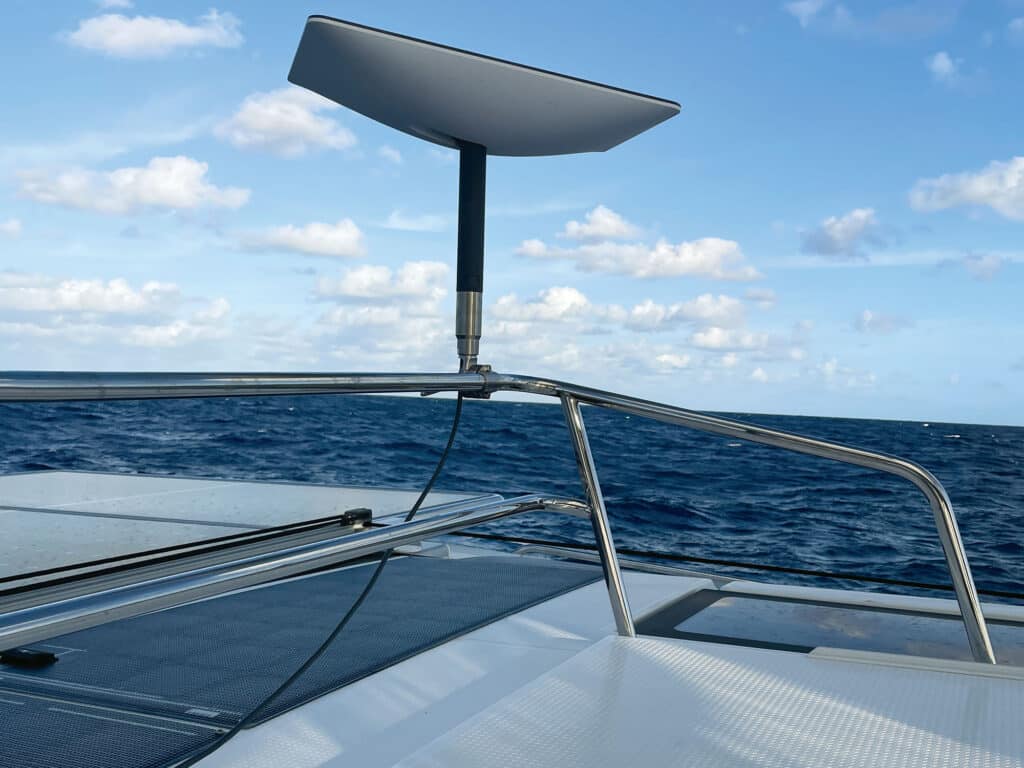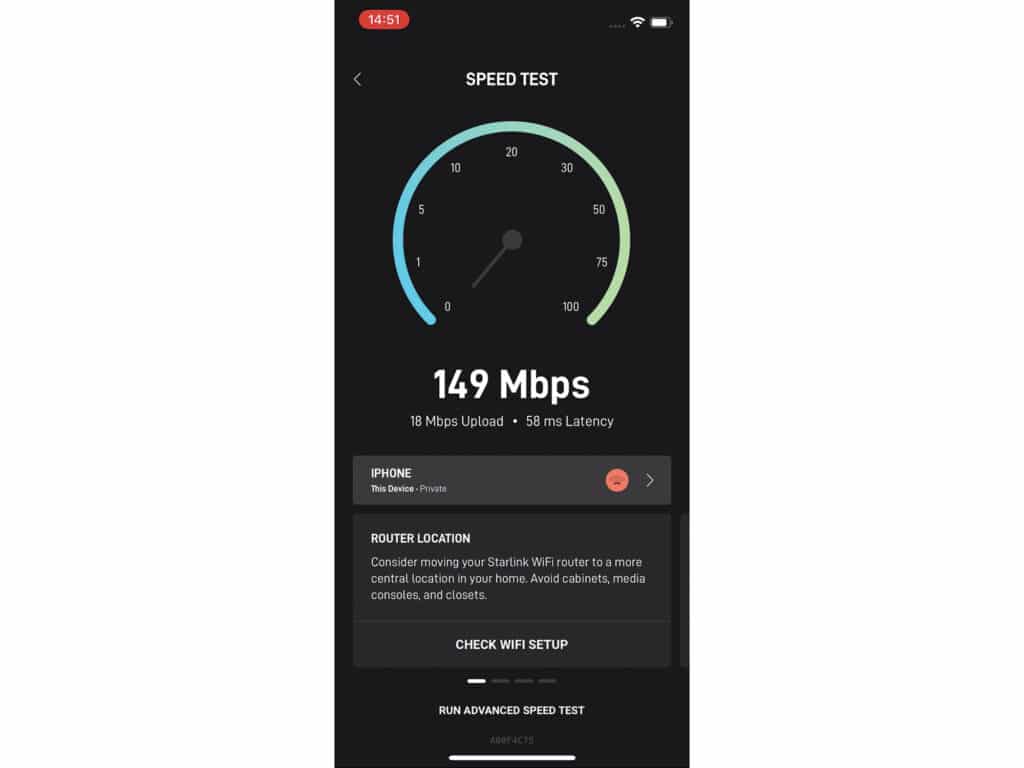
Thanks to modern advances in boatbuilding, onboard systems and technology, the sport of cruising is poised for some exciting times ahead.
Read More: Changing the Game | Generators Not Included
“Where are you?” my friend asks, peering at me through the video call. In the picture-in-picture, I can see myself and the view out the window behind me. Our Fountaine Pajot 44, Starry Horizons, is rolling, with the swells of the Atlantic Ocean picking the catamaran up and sliding it down. Intermittent bursts of sunlight constantly cause my camera to adjust the exposure.
I glance at the chart plotter, wondering how to describe my location and the technology I’m using in a way that portrays just how amazing it is.
While in Rhode Island for the summer, we picked up the latest accessory riding the crowd of sailboats down to the Caribbean this year. Its name is Dishy McFlatface, and it’s the hottest topic in offshore communications since, well, ever.
Most cruisers are familiar with the two predominant satellite companies: KVH and Iridium. KVH claims a data rate of 6 Mbps, which is close to 3G cellular speed, but the company also has costs that are prohibitive for the average cruiser—tens of thousands of dollars for the equipment, and thousands more every month for high-speed internet. Iridium’s Go service allows unlimited data for a lower price, but download speed is at best 2.4 Kbps, and the selection of apps and features is small. Neither option is viable for cruisers like me who want to work remotely, share photos or stream entertainment.
Enter Starlink. Dishy McFlatface is the 19-by-12-inch dish for its residential satellite internet service. With a network of more than 3,000 satellites in low-Earth orbit, Starlink is bringing high-speed internet all over the world.
Cruisers have two options: residential service with portability, and the RV plan. Upfront costs for each are $599, with a monthly fee of $135. When I performed a speed test in the Atlantic Ocean, the results were astounding: 149 Mbps.
This kind of service simply wasn’t an option for us eight years ago, when my husband and I took a sabbatical to sail around the world. There were months of spotty, expensive cellular service in beautiful, exotic destinations. When we finished our circumnavigation, our priorities changed. We turned our boat into a home office where my husband and I both work and cruise full time. This past season in the Bahamas, I was balancing being disconnected in the out islands with bouncing my novel between editors. It was a disappointment to have to coordinate a half-day’s sail to have enough juice to send a small text document and then wait to get it back.
This year, we plan to spend even more time away from busy areas. We want to visit less-crowded islands, have few neighbors, and lose all cellphone service. Starlink seems to be a good choice for us to blend our desire for remote locations with a need to stay connected.

The service is mostly working. In congested areas, video calls freeze. At sea, we sometimes have outages and need to restart the router. We won’t be ditching our Iridium Go or backup offshore communication systems yet; we want to be able to place a video call to show our rigger the problem we are having, and in an emergency, we don’t yet trust Starlink to save the day.
There’s also the matter of installation. The Starlink dish self-aligns with an electric motor, so it must be free to move. Dishy also comes with a 75-foot cable and a four-legged base that allows the dish to be set on a flat surface. It’s a starting point, but there are better options for boats, which often have obstructions, curved decks, and limited access to power.
In anchorages now, I can look to either side and spot a few of Dishy’s clones hanging out on various locations on their host boats. Online forums are filled with pictures of how to mount the dish. We have opted to keep it mobile for now, to try to get the best view of the satellites when we swing around at anchor. We found a robust, marine-grade stainless rail mount that we can easily move from one location to another, and we kept the standard base in case we want to put the dish on a flat surface.
We’ve heard from fellow cruisers all over the world who love their Dishy. But Starlink is still in the early stages, and new hardware and features are constantly coming out or rumored in forums. There are multiple plans such as a maritime service (similar to KVH in pricing but at a much higher speed) and RV service (with an option for in-motion hardware), in addition to the standard residential. There are rumors of add-ons for transcontinental service and ocean data.
There are also concerns about Starlink enforcing its policies. The RV plan states that using the service for more than two months outside your home country will require you to move your account to that country or get a new dish. The residential with portability plan threatens “performance degradation” when used in a secondary location for an extended period of time.
There are cruisers buying dishes on one continent and moving to another with no effect on service, even though the contract says that service is restricted to one continent. The terms and conditions also state that use of a Starlink kit (that’s the antenna, router and so forth) is not approved for in-motion service on an in-motion vehicle, and might result in your account being terminated.
Reports are minimal of Starlink enforcing these terms, but it might be only a matter of time, with a future flood of secondhand dishes hitting the market.
Still, to me, it feels incredible to have high-speed internet 500 miles from shore. Most people don’t know the struggle of spending hours trying to troubleshoot a tricky antenna or the agony of someone sending you a “big mail,” but we cruisers do. For us, Starlink feels like a game-changer.








